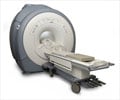
Magnetic resonance imaging (MRI) uses strong magnetic fields and radio waves to take very detailed pictures of the brain and spine. Three types of electromagnetic fields are required to create an image: static; switched gradient; and radiofrequency.
The static magnetic field is always present, even when no imaging is taking place.
Thirty one volunteers made standard head movements within the static magnetic field of a higher field 7 Tesla MRI scanner at exposure levels of zero (sham), 0.5 (medium), and 1 (high)Tesla, in a random order, one week apart.
After each exposure level, the volunteers were set 12 timed cognitive tasks, designed to test the sorts of skills that a surgeon or other healthcare professional might need to deploy within the vicinity of an MRI scanner.
These included visual tracking and movement, as well as more general functions, such as attention, concentration and working memory. The tests were neutral in that they didn't test intelligence or depend on practice.
Advertisement
For complex mental tasks, reaction and disengagement times were longer, varying from 5% to 21%, the higher the level of Tesla exposure.
Advertisement
While non-verbal memory did not seem to be affected, there was a fall in verbal memory, although this only reached borderline significance.At the highest level of exposure, volunteers also experienced some physical symptoms, including metallic taste in the mouth (12 people), dizziness (6), headache (5), and nausea (1).
"The exact implications and mechanisms of these subtle acute effects in [practice] remain unclear," write the authors.
But the introduction of increasingly more powerful MRI machines has boosted exposure levels to static electromagnetic fields for both patients and staff, they say.
"To date, mainly health and safety concerns for patients have been evaluated, but possible consequences are particularly important for professionals......cleaners, and MRI engineers since they are repeatedly exposed to static magnetic fields," they add.
Source-Eurekalert











